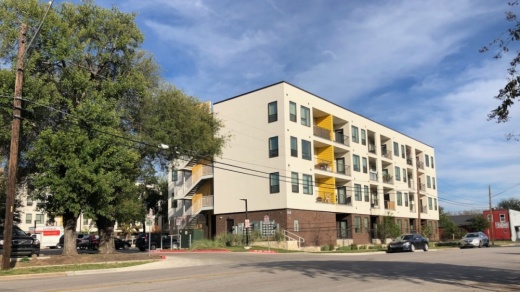Editor's note: This article has been updated to include links to additional resources for renters and homeowners.
On April 5, Travis County commissioners received updates on the county’s rental and mortgage assistance program as well as evictions following the March 1 expiration of its eviction moratorium.
Kirsten Siegfried, director of Travis County’s Health and Human Services family support division, said her staff is still working through the deluge of rental applications received during the most recent rental assistance application window.
Siegfried said the staff is working on applications received on or before March 2, and about 4,000 are pending. She said the delay is due to the high level of crisis cases—renters and owners who have had evictions or foreclosures filed against them in court or their utilities shut off—which are given priority.
“We, as the providers of safety net services, are also bound by professional ethics and our own sense of morality to triage the families who come to us for what are sometimes life threatening situations: ... food, housing and electricity, gas and water. We must catch them in our safety net.”
Commissioner Jeff Travillion expressed concern, both in the past and during the April 5 meeting, that applicants who are not given priority will enter a crisis situation while waiting for the help.
Commissioner Brigid Shea asked Siegfried if staffing issues were part of the problem.
Siegfried estimated that the department is about 20% understaffed.
Shea said most county departments are facing similar vacancy rates and suggested the commissioners might need to discuss emergency steps to address the issue.
Breaking down the data
Siegfried shared data with the county showing who the program has assisted.
The department is accepting applications for utility assistance.
Travis County has seen a 439% increase in applicants who have had their utilities disconnected since the start of the year.
Siegfried said most of the disconnects are from Austin Energy, which serves the largest customer base. While Siegfried said Austin Energy often allows customers to keep their electricity on for months despite nonpayment, she said there has been a recent spike in disconnections. Community Impact Newspaper has reached out to Austin Energy for comment.
The spike in the number of applicants facing “crisis” situations further strains resources because these applications take longer to process, Siegfried said.
Siegfried said the county has received at least one application for assistance from every ZIP code in the county, but the need is more concentrated in some areas, such as the eastern portion of the county.
Of the applicants, 62% earn between 51% and 150% of the federal poverty level, or $11,745-$34,545 for a family of three, according to the data.
Siegfried also provided data on past program receipts.
Just under half, 44% of the residents of households that have been helped are under 22 years old, according to the data.
While the rental and data applications are closed, the county is accepting applications for utility assistance.
Evictions
Nick Chu, Justice of the Peace Precinct 5, provided an update on eviction levels. On March 1, his eviction moratorium expired, and state law did not allow for it to be extended.
Chu said the county saw a smaller increase in the number of evictions than expected.
“What we are seeing in our jurisdiction is more a bump in eviction; it wasn’t the tsunami we were preparing for. ... I think the protections at the city, county and federal levels really helped,” Chu said.
On March 2, the Texas Department of Housing and Community Affairs announced $8.2 million in assistance for eligible homeowners with past-due mortgage balances through the Texas Homeowner Assistance Fund. More information can be found, here.





